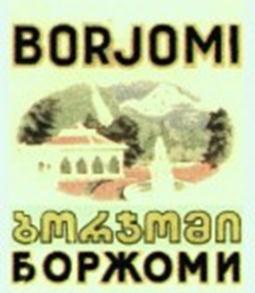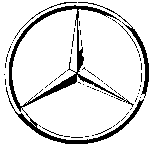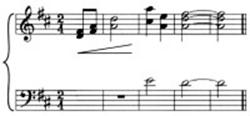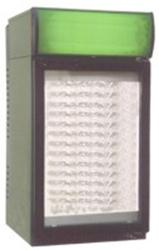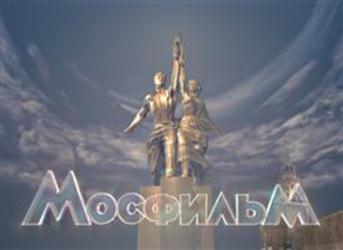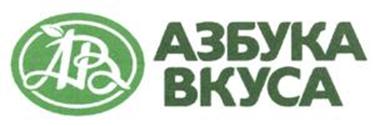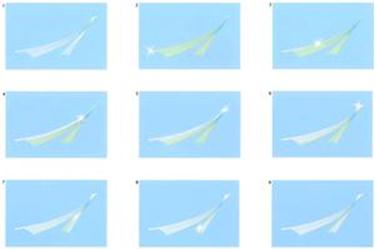Given the current economic environment in Russia, it is not possible for economic entities in civil commerce to operate successfully without special means of individualization.
Today the most popular and effective mean of individualization is a trademark.
This intellectual property object is intended for differentiating goods and services produced by one manufacturer from congeneric goods and services of other manufacturers.
The purpose of a trademark, which is an integral element of market relations, is to promote rapid development of industry and trade.
In this connection we observe a positive trend of trademarks registration. According to statistics [1], the number of trademarks registered in 2012 amounts to 40,106, which exceeds the number of trademarks registrations in 2011 by 1.11 times (35,954 respectively).
At present, the legal protection of trademarks is regulated by norms of the Russian civil, administrative and criminal laws; however, provisions of international treaties are also of material importance as part of the Russian legal system.
With regard to the subject in question, the following international treaties [2], where Russia is a participant, should be mentioned:
- Paris Convention for the Protection of Industrial Property dated March 20, 1883,
- Madrid Agreement Concerning the International Registration of Marks dated April 14, 1891,
- Nice Agreement Concerning the International Classification of Goods and Services for the Registration of Marks dated June 15, 1957,
- Vienna Agreement Establishing an International Classification of the Figurative Elements of Marks dated June 12, 1973,
- Nairobi Treaty on the Protection of the Olympic Symbol dated September 26, 1981,
- Protocol Relating to the Madrid Agreement Concerning the International Registration of Marks dated June 27, 1989,
- Agreement on Trade-Related Aspects of Intellectual Property Rights dated April 15, 1994,
- Trademark Law Treaty dated October 27, 1994,
- Singapore Treaty on the Law of Trademarks dated March 27, 2006.
The basic normative legal document regulating trademarks is Part Four of the Civil Code of the Russian Federation (hereinafter referred to as the “Code”) [3], enacted on January 1, 2008 following the results of the performed civil laws codification.
This codified act contains general and specific provisions on trademarks, Chapter 69 and §2 of Chapter 76 of the Code respectively.
At the same time, as part of the administrative reform carried out in Russia, administrative regulations enabling the Federal Service for Intellectual Property (Rospatent) to perform state functions, in particular those regarding trademarks, were prepared and enacted. These include administrative regulations concerning maintenance of intellectual property registers, registration of contracts, and extension of trademark registration certificate.
We should also mention such an important document as Rules for Composing, Filing and Examining of an Application for Trademark and Service Mark Registration (hereinafter referred to as the “Rules”) [4], approved by Rospatent’s Order No. 32, dated March 5, 2003, currently in effect and applied in the part, not conflicting with the Code, until the enactment of a relevant Administrative Regulation on Trademarks [5].
Let’s review the main provisions of the Russian trademarks legislation.
First of all, it should be pointed out that the Code equals trademarks and service marks in the legal regime, which corresponds to the provisions of the Paris Convention [6, Art. 6sexies].
Article 1477 of the Code contains definitions of the indicated means of individualization. Pursuant to the mentioned norm, a service mark is a designation used for individualization of works or services performed by legal entities or individual entrepreneurs, whereas a trademark is a designation used for individualization of goods produced by legal entities or individual entrepreneurs.
It should be noted that one and the same designation can be a trademark and a service mark at the same time.
Given that the provisions of the trademarks Code are respectively applied to service marks, the notion of a “trademark” in this article includes both trademark and service mark.
The variety of trademarks can be classified depending on the trademark right holder, degree of prominence of a trademark and its appearance.
1. By the trademark right holder, trademarks are classified into individual trademarks, where the right holder is represented by a separate legal entity or individual entrepreneur, and collective trademarks, where the right holder is represented by an association of persons. The legal regime of collective trademarks is defined by Articles 1510, 1511 of the Code.
2. By degree of prominence, trademarks are classified into ordinary and well-known trademarks. The difference between these two types of trademarks is that well-known trademarks have high reputation amount consumers with regard to the goods of a specific producer and a special regime in the member states of the Paris Convention [6, Art. 6bis]. Specific features of legal protection of well-known trademarks are indicated in Articles 1508, 1509 of the Code.
3. By appearance, trademarks are traditionally classified into verbal and figurative trademarks, as well as the so called “non-traditional trademarks”, which can be subdivided into two groups: visual and non-visual.
Visual trademarks include: volume (three-dimensional), light, color, holographic, moving (multimedia), positional and gestural.
Non-visual trademarks include: sound, taste, olfactory and tactile (texture).
Quite popular are combined trademarks, which include various combinations of elements of the above mentioned trademarks.
See examples of trademarks below.
Legal protection of trademark in Russia is carried out on the basis of its state registration in the manner established by the Code or by international treaties of the Russian Federation (see Article 1479 of the Code).
Thus, legal protection of a trademark in Russia can be requested in accordance with the procedure provided by the Madrid Agreement Concerning the International Registration of Marks dated April 14, 1891 and the Protocol thereto dated June 27, 1989.
However, within the limits of this article, it seems redundant to consider aspects of the Madrid Agreement Concerning the International Registration of Marks.
According to the national procedure, the legal protection of a trademark is requested on the basis of a relevant application for state registration of a trademark (hereinafter referred to as the “application”), filed in an established order by a legal entity or individual entrepreneur or their representative at the federal executive authority on intellectual property (Rospatent).
The application is made in accordance with the requirements of Article 1492 of the Code and the Rules. It is also necessary to follow the International Classification of Goods and Services for Registration of Marks (Nice Classification), used for drawing up a list of goods and/or services, in relation to which the trademark will be applied.
State registration of a trademark is performed by Rospatent in the State Register of Trademarks and Service Marks of the Russian Federation (hereinafter referred to as the “State Register”), based on the decision on the trademark registration, made on the basis of the claimed designation expertise, carried out in accordance with Clause 1 Article 1499 of the Code.
During the expertise the claimed designation is checked for compliance, without limitation, with Clauses 1-7 Article 1483 of the Code, containing grounds for rejection of state registration of a trademark.
According to the indicated norms, it is not allowed to register as trademarks designations of non-distinctive character, representing state emblems, flags and other state symbols and marks, that are false or misleading for the consumer with regard to the product or its manufacturer, conflicting with public interests, humanity and moral principles, as well as designations which registration may infringe the rights of third parties, particularly, the rights to trademarks, appellations of origin of goods.
After registration of a trademark in the State Register, a certificate is issued certifying the priority of the trademark and the exclusive right to the trademark with regard to the goods indicated in the certificate (see Article 1481 of the Code).
The exclusive right to the trademark registered in Rospatent is valid throughout Russia, within ten years from the date of filing an application at Rospatent, with a possibility of its extension an unlimited number of times (see Article 1491 of the Code).
It is interesting that the Code does not contain provisions defining the moment of appearing of the exclusive right to the trademark.
At the same time, pursuant to Clause 1 Article 1232 of the Code the exclusive right to the mean of individualization (trademark) is acknowledged and protected subject to its state registration.
On this basis, the date of making an entry of trademark registration in the State Register in the manner established by Article 1503 of the Code, can be considered as the date of appearing of the exclusive right to the trademark.
However, it should be borne in mind that the validity period of the exclusive right to the trademark, as mentioned before, is calculated retrospectively from the date of filing an application, not from the registration date.
The content of the exclusive right to the trademark is confined to the right holder’s authority to use the trademark, dispose of the exclusive right to the trademark, and prohibit use of the trademark by other persons.
Constitutive norms regarding utilization of the trademark and control over the exclusive right for the trademark are regulated by Article 1484-1491 of the Code.
Clause 2 Article 1484 of the Code lists possible ways of trademark utilization. However, this list is open.
Pursuant to Clause 3 Article 1484 of the Code, it is prohibited to use in civil commerce a designation identical to the registered trademark or of confusing similarity with it, with regard to congeneric goods, without the right holder’s permission.
The right to dispose of the exclusive right to the trademark can be executed without limitation by contract, including disposal of the right by contract to the other person (see Article 1488 of the Code), granting to the other person the right of use regarding the trademark within the limits established by the license agreement (see Article 1489 of the Code), and granting to the other person the right of use under a franchising agreement (see Article 1027 of the Code).
It should be noted that the indicated contracts should be executed in writing and are subject to the state registration in Rospatent, and non-compliance with these requirements entails invalidity of the contracts.
Termination of the exclusive right to the trademark is regulated by Articles 1512-1514 of the Code, including those which establish grounds and procedure of contestation and revocation of the trademark’s legal protection.
Protection of the exclusive right to the trademark is performed in accordance with Articles 1248, 1252, 1253, 1515 of the Code as well as the norms of administrative and criminal laws.
According to the general rule, disputes related to the protection of infringed or disputed intellectual rights are considered and resolved in court (Clause 1 Article 1248 of the Code).
The conflict of laws for the means of individualization is allowed under Clause 6 Article 1252 of the Code, pursuant to which, if different means of individualization (trade name, trademark, service mark, commercial designation) are identical or of confusing similarity and such identity or similarity can be misleading for consumers and/or counteragents, the priority is given to the mean of individualization, which exclusive right was created earlier.
Article 1253 of the Code provides for responsibility of legal entities and individual entrepreneurs for infringement of exclusive rights.
The legislation in force envisages legal responsibility for illegal use of trademarks: civil responsibility (see Article 1515 of the Code), administrative responsibility (see Article 14.10 of the Administrative Offense Code of the Russian Federation) and criminal responsibility (see Article 180 of the Criminal Code of the Russian Federation).
References
- Annual report on the activities of Rospatent in 2012 // http://www.rupto.ru.
- The texts of international treaties in the field of trademarks are available on the website of the World Intellectual Property Organization // http://www.wipo.int.
- Civil Code of the Russian Federation (Part Four) of December 18, 2006 № 230-FZ (as amended as of 08.12.2011 № 422-FZ) // Collected Legislation of the Russian Federation, 25.12.2006, № 52 (1 h.), article 5496; official internet-portal of legal information. URL: http://www.pravo.gov.ru (date accessed: 01.05.2013).
- Rules for Composing, Filing and Examining of an Application for Trademark and Service Mark Registration // Rossiyskaya Gazeta, № 82 dated 29.04.2003; http://www.rupto.ru.
- Draft Administrative Regulation for provision by the Federal Service for Intellectual Property of a public service concerning organization of acceptance, registration and examination of applications for state registration of trademark, service mark // http://www.rupto.ru.
- Paris Convention for the Protection of Industrial Property of March 20, 1883 // http://www.wipo.int.

 View this article in Russian
View this article in Russian
